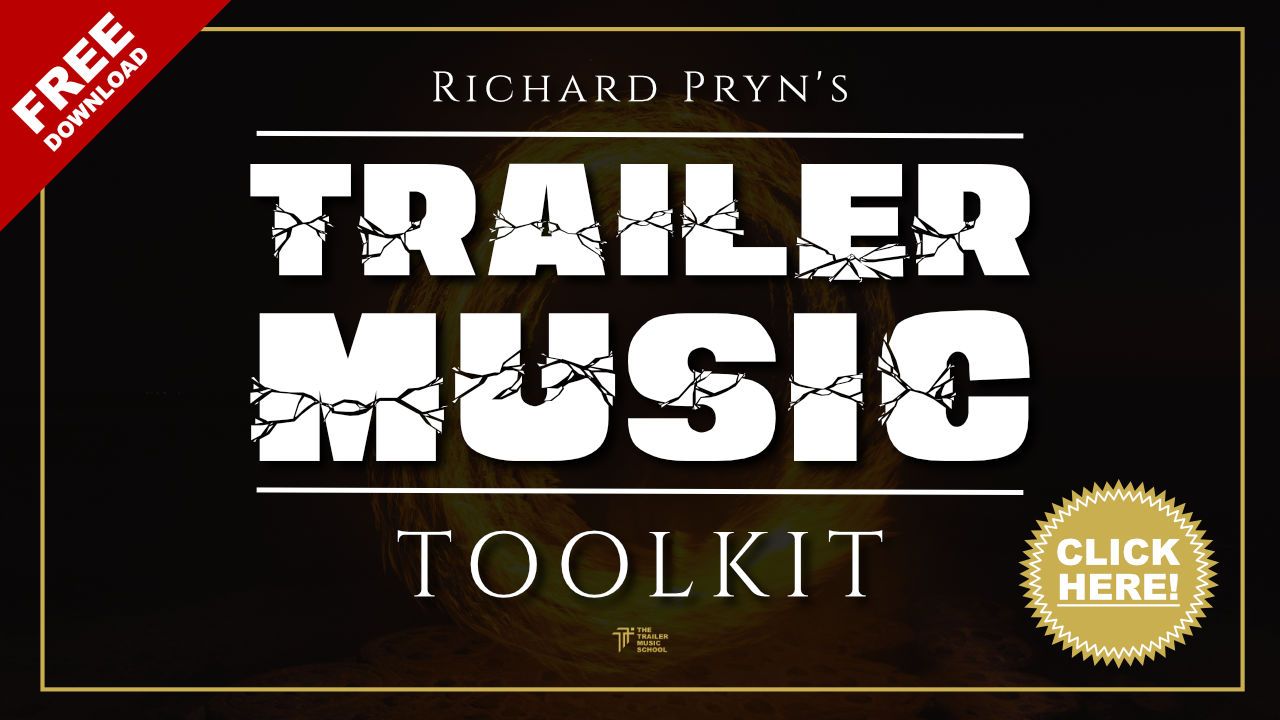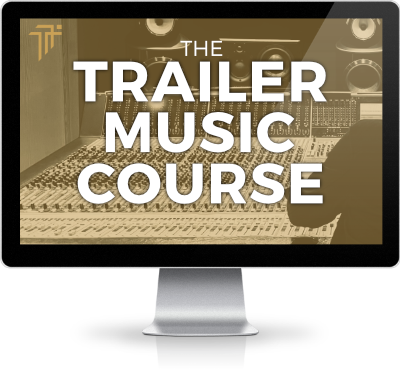I get it. You’ve found trailer music and you want to start writing your own, but you’re not sure how to start?
Don’t worry, I can help
Trailer music follows the three-act structure of storytelling and filmmaking.
Before we explore this in more detail, I want to make sure that you have fun while doing your research and finding inspiration. So you first step is to submerge yourself in the wonderful world of movie trailers
If you want to learn how to structure your trailer music for maximum effect, then you need to watch movie trailers.
It’s the most obvious (and annoying)? advice you will get when learning how to write any type of music.
Do your research.
You don’t have to be as nerdy as I am, unless you want to. Cue taking notes on your brand new notepad entitled ‘How to write trailer music’.
You can just sit back and watch them. To the point that you will start to notice some similarities. You will start to notice the way they are put together. You will also start to get a feel for the type of trailer music you enjoy as well.
In fact that is exactly where I would suggest you start. Watch the trailers of the films and shows that excite you. This is the best way to make the “research” fun.
For me, I would start with the MCU (Marvel Comic Universe) and the Star Wars franchise.
They make me feel the same way I did when I went to the cinema as a kid…..? In fact they also make me feel as excited as when I would buy a new pack of Marvel trading cards.
Let’s set the mood
I don’t mean dim the lights and put on some smooth jazz. I mean, let’s look into the first act, as this is when you set the mood and tone of the trailer.
With regards to storytelling, your first act is when your main character, your protagonist, is in their status quo. Their world as it currently is before they are thrown into change.
This doesn’t mean that the first act of a trailer always represents the character before the change, it could even start with them after the change. The first act in this case serves to show the mood and emotion of the character at that point.
This first act is usually used to introduce the character and their world, or to introduce the predicament they have been placed in.
Here are a few great examples:
Take this Frozen 2 trailer for example. The music sets a dark mood to match how Else is feeling. Sonically and visually everything ramps up before she is literally thrown into the abyss, the change.
Let’s take a look at this trailer for the awesome MCU show, Loki. We start with Loki after he is thrown into change (or prison in this case). The music represents the confusion and otherworldly nature of the setting.
Remember, first acts usually only last between 15-30 seconds. They are kept short because the purpose they serve is not as important narratively as the other two acts.

Get my FREE Trailer Music Toolkit
It contains all the One-shots you need to sketch a complete track, and the hugely popular Perfect Trailer Music Cue Blueprint PDF.
When the sh*t hits the fan
Welcome to act 2; the world of pace and building tension.
This is the point in the story when the character is introduced to the problem or has started to try to “deal” with it and it always brings with it a sense of drive and/or urgency.
This is when we get the story laid out to us and so the problem that the main character or characters face now becomes obvious.
You can see this very clearly in the Loki trailer. Owen Wilson’s character literally explains what has happened and what is happening.
It seems so very simple when you think about it but it is really hard to do succinctly. A trailer editor is a bit of a wizard in that way – why?
You may find that the second act is split into two sections. The first section deals with the exposition (the story is explained) and the second section deals with the character taking action.
Hence the need for pace in the music. These days it is common to use ticking as a means of bringing pace and tension without having to do much. But there have been many devices that revolve around consistent rhythms, usually picking out the eighth or quarter notes.
Depending on the length of the trailer, act two can last anywhere between 20-60 seconds.
The world is ending and everyone is in danger
That is the message of every act three. Well, some aren’t quite so dramatic as that. Some might simply be, “Oh no, the main character loses their friend that also happens to be a football”( reference)
Either way, the third act is all about fast edits, big drums, huge sounds, drama, drama, and more drama.
Again if we look at the Loki trailer. We can see scenes of what looks like the world ending, people being hurt (probably emotionally as well) and life as we know being at risk.
The music reflects this; huge drum hits punctuating certain edits or certain actions of the onscreen characters, massive driving strings keeping the pace and urgency at the forefront of our minds, and finally epic brass and synths screaming “WAR”, or at least, “BRAAAM!”. –
The exact same is true of the Frozen 2 trailer; we see woods on fire, humongous trolls throwing boulders, scenes filled with action.
Act three is saying to you, “If the first two acts didn’t get you excited about the movie, I definitely will!”Embedded iFrame
Your third act will generally be 30-60 seconds long and regardless of what type of music you are producing it must bring the drama.
Slap the audience in the ears with this last section
Don’t forget your 4th act.
Wait, what!? You said there were only three acts!?
Well, technically there are, but as you will notice with the two trailers we have been looking at, they have a break just before the end and then the music comes back in for some fast, last minute action, the titles, and the logo.
This is your 4th act.
I generally keep this as short and punchy as possible as it just needs to cover the titles and logos really. But it’s your last chance as a composer to make sure that people want to see the film.
Depending on the movie, or show, your music is for, this 4th act might feel glorious and warm, or dark and terrifying.
The best way to approach this is, “how can I take 5 seconds from my third act and make it feel like a succinct musical sentence that effortlessly draws the trailer to a close?”
Sounds daunting, I know, but it is much easier than you think.
Trailer Music Structure Template
Ok so you got this far. Nice work.
If you are looking for something a little more pedantic when it comes to how to structure your track then you can borrow this.
Act 1 – 30 seconds
Act 2 – 60 seconds
Act 3 – 60 seconds
Act 4 – 5 seconds
This is not the golden rule for how to structure your track but it will help you get a feel for the structure really quickly and easily.
To make it even easier, I would suggest dividing act two and three in half.
So it would look more like this:
Act 1 – 30s
Act 2a – 30s
Act 2b – 30s
Act 3a – 30s
Act 3b – 30s
Act 4 – 5s
Remember you can change this up, but make sure that all your acts flow into each other nicely and that they each serve their own unique purpose narratively.
I go into even more detail on the structure of Trailer Music in my flagship course, The trailer Music Course.

The Trailer Music Course
This is my flagship Trailer Music course. It was designed to teach you every single aspect involved in writing trailer music; from understanding structure, and creating your own sounds, all the way to a mixing and mastering masterclass with Toby Mason.






